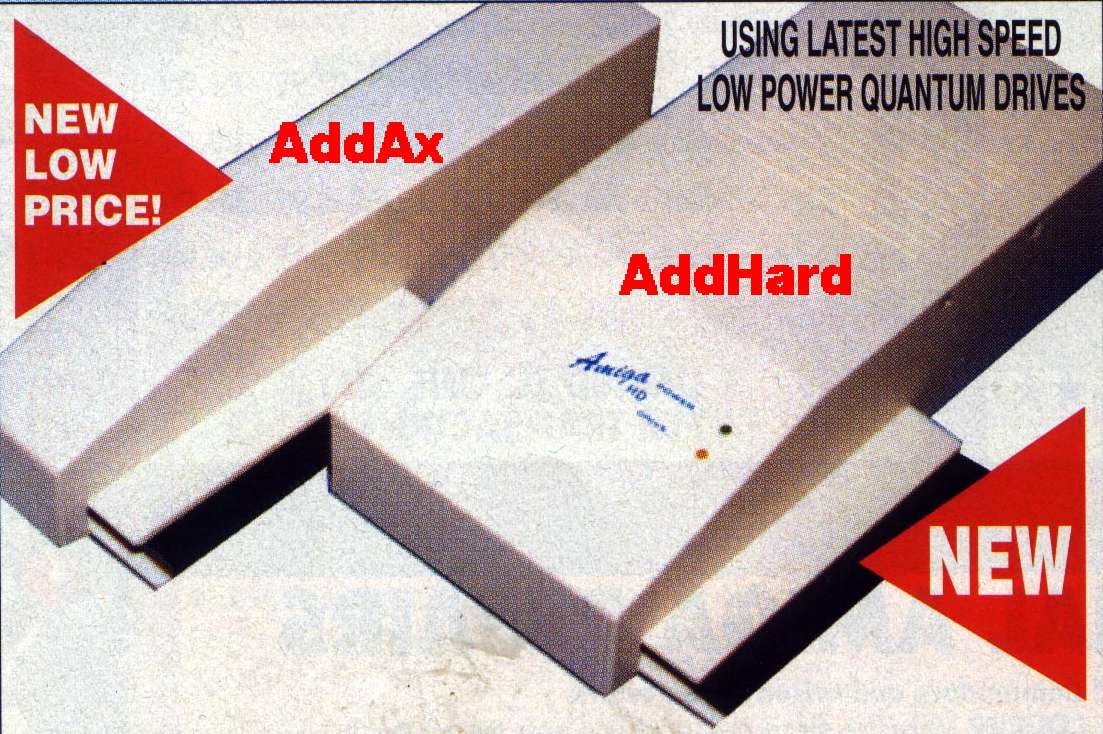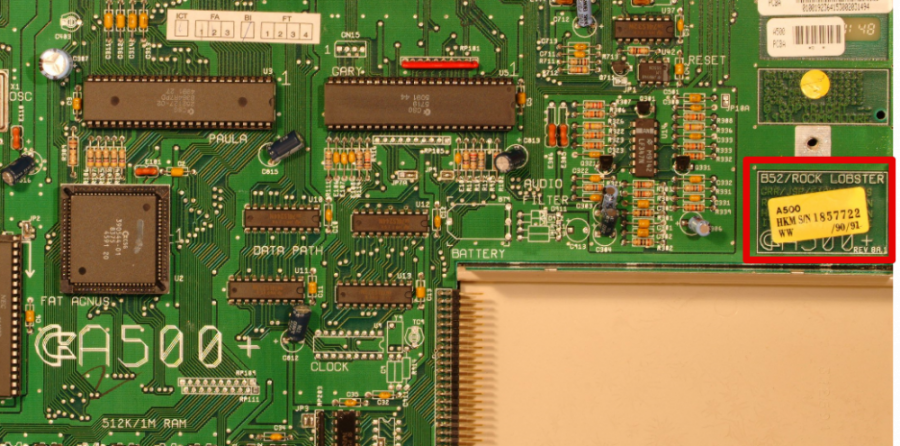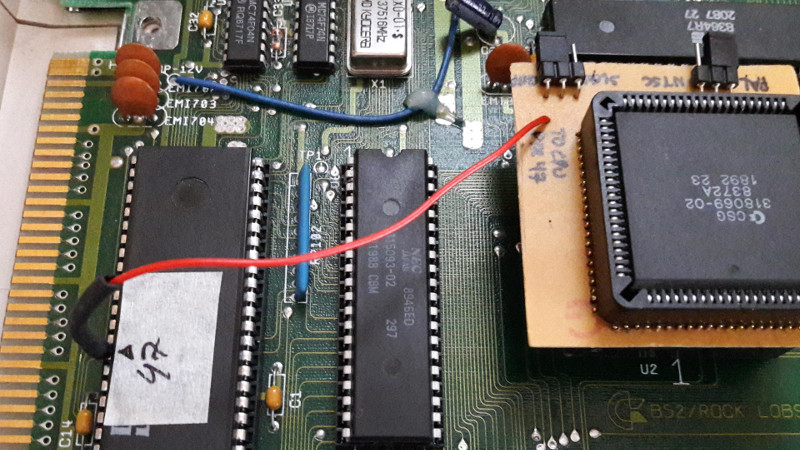Amiga 500 Side Expansion Slot
| Mission | Apollo Core | AMMX | Accelerators | Vampire 4+ | Shop | Resellers | Benchmarks | Download | Forum | Learn more | FAQ | Contact |
Help Models Amiga 500 Launched in 1987, Amiga 500 was the low-end successor to Amiga 1000. It became an incredible popular home computer, and it's main competitor was the Atari 520ST. Due to the slim design, there was no room for the Zorro slots. The first few Amiga 500 came with Kickstart 1.2, and later 1.3, which both included a lot of bug fixes. CD32 Expansion Slot has been designed specifically for Amiga CD32 and provides a way to expand your Amiga’s specs (with devices such as RAM memory expansion, MPEG decoder etc.). The one extra feature of this card is a VGA port (providing standard Amiga 15 kHz RGB signal). Features:. Amiga CD32 compatibility.
'This CPU that's on the Vampire is the best CPU I've ever had in an Amiga'
- Stephen Jones,
Director and Developer
Order
| Specification >> |
Vampire 500 V2+ is your ultimate CPU accelerator board for the Amiga 500/1000/2000. Powered by the Apollo Core 68080 which is a code compatible Motorola 68K processor, it is up to four times faster than the fastest 68060 at time. It also brings your Amiga to next-gen level by bringing you digital video with millions of colours, Ethernet module connector and high-speed IDE port |
Designed for Amiga 500 rev 3, 5, 6a, 8 and Amiga 2000 where it connects to the CPU socket. Connecting to a CPU slot adapter on the Amiga 2000 is not officially supported but possible. Impressive results of the V500 V2+ processor: 149 MIPS / 74 MFLOPS / 142905 Dhrystones with SysInfoWith third-party accessories users can also connect to Amiga 1000. V500 V2+ offers you the best acceleration possible! |


The V500 is designed for the Amiga 500. It is meant to replace the 68000 CPU. Therefore, it plugs into the 68k CPU socket of the Amiga 500. Of course, the old 68000 CPU must be removed from the socket before plugging in the Vampire 500 V2+. To ensure full connectivity removing Kickstart chip might be necessary. The Vampire 500 V2+ can also be plugged into the on-board 68k CPU socket of the Amiga 2000. Again, the old 68000 CPU must be removed from this socket before plugging in the Vampire 500. We know that the Vampire 500 works perfectly in the Amiga 2000 if the installation is done correctly. On both the Amiga 500 and the Amiga 2000, the 500 V2+ can be physically plugged into the 68k CPU socket in only one way. Accidentally plugging it in upside down is physically impossible. Vampire 500 V2+ works great in the Amiga 2000Some adapters allow plugging the V500 V2+ into the Amiga 2000 CPU slot instead of into the on-board 68k CPU socket. We know that the Vampire 500 works well if this installation is done correctly, but you must be careful about these risks during installation:
Please be aware that problems caused by Amiga 2000 CPU slot adapters are not covered under warranty. A500 installation info: for proper connectivity Kickstart chip might need to be removed (so that both CPU along with Kickstart slot are empty) Using third-party accessories it is also possible to use V500 in Amiga 1000. |
Vampire 500 V2+ is equipped with the 68080. It is a new CPU you can code as easy as any previous Motorola 68K processor. 68080 is an affordable CPU for your Amiga that is way faster than the fastest 68060. It is 100% code compatible with all CPUs and FPUs of the Motorola 68000 family. 68080 in the V500 does on average 149 MIPSDesigned according to modern processor standards, it's fully written in VHDL, and is intended to run on Altera Cyclone FPGAs. OS 3.x currently recognizes this new processor as a 68040. Still we recommend to use brand new open-source Apollo OS that will be able to make full use of advanced V500 features. Below is benchmark done with the SysInfo tool for various configurations. All tests show that 68080 is much faster than 68060 200Mhz - scores are all confirmed by SysInfo, SysSpeed and AIBB benchmarking tools. Just compare the SysInfo results below: |
No other A500 accelerator is a match for Vampire 500 V2+
AMMX is a 64 Bit SIMD extension to an 68k processor. AMMX is optimized for integer and pixel operations. Thanks to AMXX, software on Vampires can run much faster that on other accelerators or Amiga computers. Thanks to AMMX, the 68080 at 80 mhz achieves performance close to the PowerPC 750 at 800 MHz. AMMX brings the 68080 to 600-800 MHz PowerPC G3 levelNote that AMMX and MMX have very little in common other than sharing three letters. The instructions are different and AMMX brings a significant number of features that MMX simply lacks. For graphics and video operations the integer math is most important. Excellent design gives AMMX a huge advantage over SSE for 2D game coding For 2D games AMMX beats SSE hands down. Just have a look at the results below: |
This result is possible thanks to use of AMMX
This new FPU Core is mostly hardware-implemented, very close to a 68060 FPU and 100% pipelined. The whole set of instructions from the 68040 and 68060 is available, as well as the whole 68881 and 68882 subset. From an end-user or end-coder perspective, the 68080 FPU does not provide any new floating point instructions or any other big changes; the FPU instruction set is the legacy one. 68080 FPU is very promising showing 35-40 MFLOPS in SysInfoSince the 68080 is aiming at 68040 compatibility, we decided to implement a full 040/060 FPU in hardware and to offer an efficient FPU interface for the instructions that are not implemented in hardware. As a consequence, all the legacy 68881 and 68882 instructions are handled with new optimized mechanics. The result of this work consists of an autonomous FPU, not relying on any third-party tool / library anymore (as opposed to what 68040/68060.library does). V500 FPU is also able to use a dedicated Floating Point Software Package (FPSP 080). The original 68080 FPU was designed to perform all calculations in 80-bit “extended precision”, like the original 68k FPUs. This is too big to fit into FPGA. Therefore, the V500 FPU features 52-bit precision. |
Please note that this chart shows the V500 V2+ FPU running in debug mode. With all FPU features enabled, results can be 3-4 times faster.
We are developing the fourth-generation Amiga chipset. Its reduced version is implemented in V2 accelerator series. It features new chunky mode with built-in RTG and Truecolor 32-bit color depth.
Chipset revision in V500 currently consists of two new chips:
Isabel (slimmed Lisa video chip with new chunky mode)
Anni (improved Alice DMA chip)
Chipset in V2 explained
Chipset in V2 supports new Chunky Mode. Since ReTargetable Graphics became a standard for graphics cards we integrated RTG API into Vampire 500 V2+, so that you can code directly like the Amiga chipset. We wanted to keep the feeling and coding the same like on Amiga. It is similar to adding an RTG graphics card features to your A500 allowing you to display up to 1600×900@24Hz in Truecolor (32-bit). Only RTG screen modes are output from V1200's interface. Screen modes that use the classic Amiga chipset are still transmitted from the legacy video outputs of the Amiga. Vampire 500 V2+ features built-in RTG capabilityThe new chunky plane can be displayed on its own by any dedicated RTG driver and allows you to play games like Quake or Diablo with excellent framerate. Our current chipset implementation in V500 features built-in RTG capability. Although Vampire 500 V2+ chipset comes without planar modes capability, this is already enabled on your original motherboard so you can still use existing functionality. V500 provides you with the fastest RTG graphics card performance. It leaves all previous generation of graphics cards behind, including CyberVision64, Picasso IV, or Mediator with Voodoo or Radeon according to P96 Speed benchmark. RTG built-in into Vampire 500 V2+ surpasses all RTG graphics cards used on Amiga systems. |
V500 gives you more memory than any other Amiga computer. Now you can enjoy new heights of performance, easily leaving all PPC-based solutions behind. Vampire 500 V2+ comes with 128 MB SDRAM memory onboard. Excellent results of the V500 memory: 529 MB/s Fast RAM access speed |
Say goodbye to obsolete PowerPC hardware
You can connect ENC28J60 Ethernet Module to Vampire 500 V2+ and enjoy great Internet connectivity. On V500 board revisions starting with 2.2 this is possible using dedicated Ethernet Module Connector and flat ribbon cable (female-to-female). On V500 board revisions earlier than 2.2 this is still possible using I/O Expansion socket and Dupont jumper wires (male-to-female) using GOLD2.9 and higher only.Do NOT use it on earlier cores because of pinout differences. With extra Ethernet module you can surf the Web on Vampire 500 V2+For detailed installation instructions go here. |
Vampire 500 V2+ offers you extraordinary IDE speed. We push the technology forward and make a big leap into the future of our platform. V500 includes a 44-pin IDE port that reaches speeds of 14MB/s for a start. Vampire 500 V2+ gives you over 14MB/s IDE speedWith a green and energy-saving approach in mind, we moved from legacy 3.5' floppes to using microSD cards, while still taking the legacy IDE design into consideration. The CompactFlash IDE port is an ideal solution, as our favourite personal computers were designed for native IDE use. Vampire 500 V2+ works with most MicroSD and MicroSDHC cards, up to Speed Class 10. It works from OS 3.x with the sagasd.device and will all filesystems supported on the Amiga (FFS, SFS, PFS, FAT32, ext2/ext3). |
- Hardware-accelerated video playback |

*** Important information: ***
IDE 44-pin: Please note, there is power on the IDE-44 port. Wrong placement on this plug can destroy the device.More info >>
Some adapters might allow the user to plug in the card “rotated”. Please understand that this wrong connection of the card will result in short circuits - probably destroying the Vampire and the Amiga.

There are some 3rd-party adapters on the market (e.g. Kipper2K's) that does not meet our safety guidelines and can damage both your V500 and your Amiga.
Please be aware that problems caused by Amiga 2000 CPU slot adapters are not covered under warranty.
A500 installation info: for proper connectivity Kickstart chip might need to be removed (so that both CPU along with Kickstart slot are empty)
On V500 board revisions earlier than 2.2 it is still possible to connect Ethernet module using I/O Expansion socket and Dupont jumper wires (male-to-female) using GOLD2.9 and higher only. Do NOT use it on earlier cores because of pinout differences.
- Please note that not all mice and keyboards might work. Here is the list of compatible Peripherals >>

a) Performance is application-dependent. See Benchmarks >>
b) Functionality varies between different TV/monitor models. Please make sure the display is able to show V500 V2+ modes first.
c) Speed boost depends on the device PIO mode support.
CPU Accelerator for AMIGA A500/A1000*/A2000
* third-party accessories might be required
|